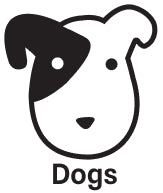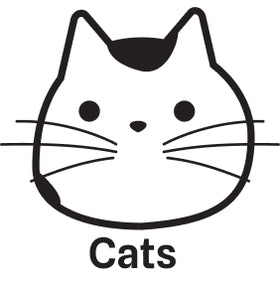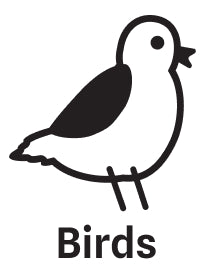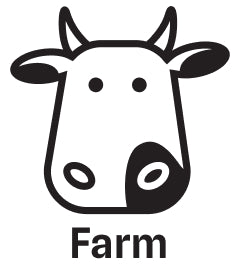
What’s the best collar for your dog?
Among the essential accessories for the dog, the first place is taken by a collar, and you just cannot do without it if you have a four-legged friend. Walking with a dog without a collar is dangerous both for it and for others. Choosing the right collar for your pet is not as easy as it seems at first glance. There are various types of collars designed not only for each breed but also for specific cases and types of training. Before buying an appropriate accessory for your dog, you need to understand all the variety of collars that the pet industry offers.
Consider the material of the collar
Now, there is a large selection of materials, and each one has its own pros and cons:

- Leather. Traditional leather collars are suitable for all dog breeds. They can be used for puppies or when you need to train the dog to wear this accessory. It is better to buy a collar made of two-layer leather, for it’s more durable. If it’s stitched with a strong thread, it may provide even better reliability.

- Tarpaulin. A relatively cheap and long-lasting material. When it contacts water, it becomes very heavy, and poor drying makes it rot. Tarpaulin collar has a specific appearance and is mostly used when there are no other options available.

- Nylon or other synthetic stuff. Many owners claim that this dog collar is perfect for daily use. Top-grade nylon is notable for its lightness and durability. Its properties remain the same after it gets wet, it does not stretch, it does not fade, and it’s easy to wash such collar in the washing machine. Besides, it doesn’t cost too much. The only drawback is that low-quality nylon can paint the dog coat.

- Metal. A very controversial material. In this case, we are dealing with the so-called strict collar, a set of connected spikes. It’s very specific and is only used under the supervision of an instructor. A strict dog’s collar should fully match the neck circumference behind the ears of the pet. It is desirable to choose spikes located perpendicular to the neck, and not at an angle, then they apply dotty pressure on the dog without scratching its skin.
The collar design is important
If you wonder how to choose the right collar for your dog, you should also think of the design of it.
There are four main types, and they are as follows:

- Harness. It’s a kind of buckle collar which is suitable for dogs of small breeds and for brachycephals - Boston Terriers, pugs and those dogs that are prone to tracheal collapse. It holds the dog firmly, does not constrict the trachea, and does not restrict the breathing. If the leash is fastened on the back, the disadvantage of such a harness is that it does not allow you to correct the behavior of the dog on a walk when it pulls the leash. More control is provided by the harness which is attached on the front.

- Choke collar. The American Kennel Club recommends choke collars for training puppies. However, you must be able to use them so as not to accidentally strangle the puppy. The essence of training a dog in a choke collar is that you don’t have to use this collar often. The dog gets a rather painful and sharp lesson, it quickly gets used to the fact that it shouldn’t pull the leash too much, and then you can abandon such a collar resorting to it in rare cases only.

- Martingale collar. This collar, which is also called half-choke collar, is ideal for dogs of hound breeds with a slender neck. It looks like two rings - one is larger and the other one is smaller. The collar is easy to put on over the dog’s head, and it is tightened when the dog begins to pull the leash on a walk. You can't leave the dog unattended with such a collar - it can accidentally injure itself or even strangle itself.

- Electronic collar. This one is based on electricity and can be recommended for training dogs to avoid certain objects. In order for training to be effective, you need to use such collars rarely (no more than 2 times a year and only when developing avoidance of a small number of objects).
Pay attention to the right size of the collar
Measure the neck of the dog and then choose the collar of the appropriate size. The circumference of the neck can be measured with a measuring tape. Remember: there should be enough space for your two fingers between the suggested collar and the dog’s neck. Let’s say, you got a size of 41 cm.
If you do not have the opportunity to see if the collar is right for your pet’s neck, just look at the label with the indicated size. Every self-respecting manufacturer should designate the range of the collar. So, go by this. Choose sized collar carefully. You should try to choose a size that will not start or end with the figure you need. There may be an error in your measurements, and the collar will be too large or too small for your pet. In our case, 41-62 cm is not your choice, as well as 26-41 cm, but 32-47 cm is quite suitable, for it has a tolerance in both directions.
There’s a common misconception that you need to choose a more spacious collar for a dog in case it pulls the leash too hard. Choosing a wider collar for such a dog, you agree that the dog will continue to drag you on a leash because it is more convenient for the pet. However, you should remember that it’s harmful to the dog, for the strong pressure on the neck can cause the deformation of vertebrae and squeeze blood vessels. Always think of your pet’s health and make the right choice based on that.
Final thoughts
One of the properties of a domestic dog is its ability to learn under the influence of negative reinforcement. This ability is based on controlling the dog using collars. There is no single correct equipment for a pet, for each type serves a specific task. But if you want to choose the right collar, it is important to understand how it’s perceived by the dog, how it works, whether it’s useful or can cause harm.







Leave a comment